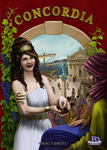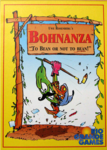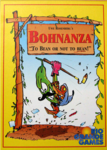 Of course, no discussion of early-game structures would be complete without talking about who gets the first turn, and with it, we’ll take the chance to explore how turn order is decided in strategy games–and whether it really matters who takes which turn.
Of course, no discussion of early-game structures would be complete without talking about who gets the first turn, and with it, we’ll take the chance to explore how turn order is decided in strategy games–and whether it really matters who takes which turn.
How is the first turn decided?
Perhaps surprising in a genre notorious for its thick rulebooks and considerable strategic depth, plenty of Euro games are completely silent on who goes first. Mainstays like Dominion and Power Grid don’t specify a way to determine the starting player at all; popular house-rule methods like “whoever gets the gold from this deck of copper goes first” or “if your house drops out of my hand first, you go first” get the job done but are completely arbitrary.
Other games use the “first turn decider” as a chance to inject a bit of levity into the rules: the first player in Small World is the one with the pointiest ears; in Pandemic, the one who was most recently sick; in Terra Mystica, the one who most recently planted something in a garden. The designers of these games are giving a wink and a nudge to the players, giving an objective way to determine the starting player while telling them that whoever goes first doesn’t really matter at all. (We’ll discuss the validity of that assumption in the next section.)




 This month we’re talking about game structure, a potentially intimidating but universally helpful topic in game design. Modern tabletop games more and more often spawn from a flurry of exciting ideas followed by the practical mantra of “make a prototype and playtest, playtest, playtest”.
This month we’re talking about game structure, a potentially intimidating but universally helpful topic in game design. Modern tabletop games more and more often spawn from a flurry of exciting ideas followed by the practical mantra of “make a prototype and playtest, playtest, playtest”.


 We like to conclude each series of topics with our Design Analysis series where we can dive into some of our favorite games from both past and present. To wrap up this group we thought it’d be fun to look at two games simultaneously on topics like Satisfaction, Pacing and Player Control. Lewis & Clark and Concordia were two of our favorite games we played last year and I think you’ll agree each design makes for some interesting observations.
We like to conclude each series of topics with our Design Analysis series where we can dive into some of our favorite games from both past and present. To wrap up this group we thought it’d be fun to look at two games simultaneously on topics like Satisfaction, Pacing and Player Control. Lewis & Clark and Concordia were two of our favorite games we played last year and I think you’ll agree each design makes for some interesting observations.

 We like to conclude each group of monthly topics with our Design Analysis series where we can dive into some of our favorite games from both past and present. Our most recent series we covered game design topics such as Satisfaction, Pacing and Game-Defining Concepts. This week we’re going to take a look at Uwe Rosenberg’s bean trading classic Bohnanza.
We like to conclude each group of monthly topics with our Design Analysis series where we can dive into some of our favorite games from both past and present. Our most recent series we covered game design topics such as Satisfaction, Pacing and Game-Defining Concepts. This week we’re going to take a look at Uwe Rosenberg’s bean trading classic Bohnanza.

 We like to conclude each group of monthly topics with our Design Analysis series where we can dive into some of our favorite games from both past and present. In the last half of 2014 and earlier this year we wrote about game design topics like Theme, Downtime and Pacing. This week I’m tackling a giant in the field, Twilight Struggle, which has spent years at the apex of BoardGameGeek’s
We like to conclude each group of monthly topics with our Design Analysis series where we can dive into some of our favorite games from both past and present. In the last half of 2014 and earlier this year we wrote about game design topics like Theme, Downtime and Pacing. This week I’m tackling a giant in the field, Twilight Struggle, which has spent years at the apex of BoardGameGeek’s 